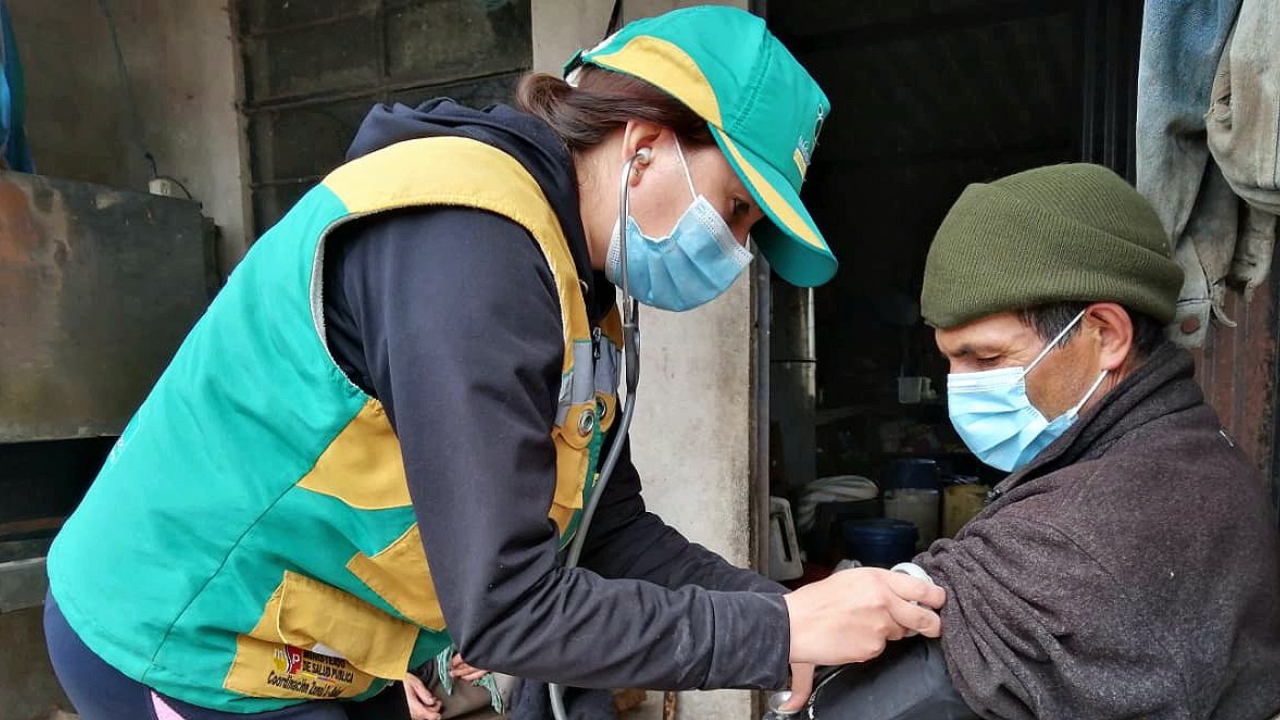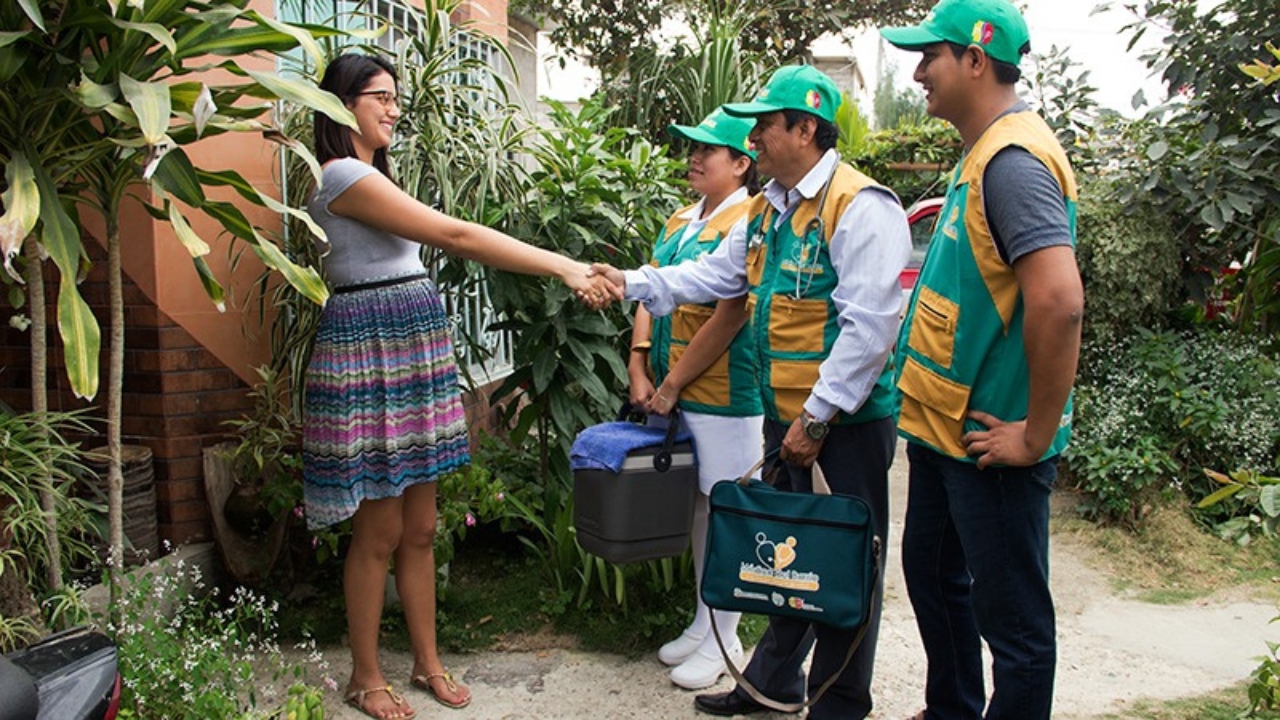
The effects of mobile primary health teams: Evidence from Estrategia Médico del Barrio in Ecuador
- Posted by Odalis Clemente, Alonso Quijano Ruiz
- -
- 01-09-2023
- -
- Areas: Health
Researchers: Omar Galárraga, Alonso Quijano-Ruiz, Marco Faytong-Haro
Method: Differences-in-differences (DD)
Data source: 2018 and 2012 National Health and Nutrition Survey (ENSANUT) and administrative data from health districts
Target group: Population living in cantons with and without exposure to Estrategia Médico del Barrio
Sample: 200 thousand individuals sampled in both waves of ENSANUT
Outcomes of interest: Reported health problem, access to healthcare, and preventive care utilization
Journal and publisher: World Development, Elsevier
Manuscript: https://doi.org/10.1016/j.worlddev.2024.106659
Starting in 2017, Ecuador gradually expanded its primary healthcare access program nationwide using mobile traveling healthcare teams through the “Estrategia Médico del Barrio” (EMB) program [or Neighborhood Doctor Strategy]. This study evaluates the impact of EMB teams, which consisted of a primary care physician, a nurse, and a community health worker, on health outcomes and healthcare utilization. Using data from Ecuador’s National Health and Nutrition Survey (ENSANUT) (2012 and 2018) along with administrative records from nearly one hundred health districts, the researchers utilized a quasi-experimental approach to analyze health outcomes in communities that were exposed to EMB compared to those that were not. Findings show that EMB led to a 13% decrease in the likelihood of reporting health issues and a 28% increase in preventive care utilization, with mixed effects on curative care. The program was particularly effective in rural and peri-urban areas with high indigenous populations.
Policy issue
Primary healthcare access remains a significant challenge in low- and middle-income countries, including Ecuador, where physician density was only 2.2 per 1,000 people in 2017. Rural and peri-urban communities, especially those with high indigenous populations, face barriers due to geographic isolation and socioeconomic factors. EMB, launched in 2017 and expanded through 2019, aimed to enhance healthcare access by deploying mobile teams to conduct home visits in marginalized areas, providing diagnostic, preventive, and health education services.
EMB teams were composed of a primary care physician, a nurse, and a community health worker, officially referred to as “técnico de atención primaria” (TAP). Community health workers, although not professionally degreed, receive training from the Ministry of Public Health. At the health center level, EMB operated as follows. First, EMB teams would make home visits to identify vulnerable groups and gather health data. For various communities, getting there required traveling by foot or other unconventional means (e.g., boat) due to accessibility challenges. Once a patient was identified, they were referred to the closest health center for an appointment with a specialized family physician. In-home appointments were also made when a patient could not commute to the health center.

Study details
The study employed a quasi-experimental design, using data from the ENSANUT survey, conducted in two waves (2012 and 2018). This survey provides deidentified data of over one hundred thousand individuals, including their canton of residence, health status, and healthcare access (preventive and curative care).
The staggered rollout of EMB allowed investigators to compare change in outcomes from 2012 to 2018 for people living in cantons exposed to EMB at the time of the 2018 ENSANUT survey to those who had not yet been exposed. By requesting data from nearly one hundred health districts, the researchers were able to obtain the exact dates on which EMB was implemented in each canton and the number of health care personnel involved.
Using a difference-in-differences (DD) approach, the investigators assessed:
- Reported health problem: Whether an individual reported feeling sick in the past 30 days.
- Health care utilization: Whether the individual received care from a healthcare provider to solve the health problem.
- Preventive care utilization: Whether an individual received preventive care (e.g. vaccination, screening, or health education participation) in the past 30 days.
Findings and policy insights
Key findings include:
- EMB reduced the likelihood of reporting health issues by 13%.
- Preventive care utilization increased by 28% in the areas where more healthcare personnel were deployed.
- Mixed results were observed for curative care, with no significant increase in treatments within 30 days, possibly due to delays in accessing care.
- Cantons with high indigenous populations saw increase in reported health issues (likely due to better diagnosis) and stronger preventive care uptake.
One key finding of this study is the connection between the increase in preventive care utilization and the number of EMB staff deployed in an area. This trend appears to be driven by the introduction of community health workers, whose role was to identify vulnerable patients and to engage in health promotion within their communities. The ability of these non-specialists to deliver preventive care could explain the increased uptake observed, where redistributing healthcare tasks can optimize healthcare delivery, particularly in preventive care.
These results suggest that mobile health teams like EMB can effectively reduce healthcare disparities in underserved areas, particularly for preventive care and diagnostics. Policymakers in low- and middle-income countries should consider scaling up similar community-based interventions, focusing on early implementation and integration with existing health systems. Addressing logistical challenges, such as staffing and resource allocation, is essential for sustained success.